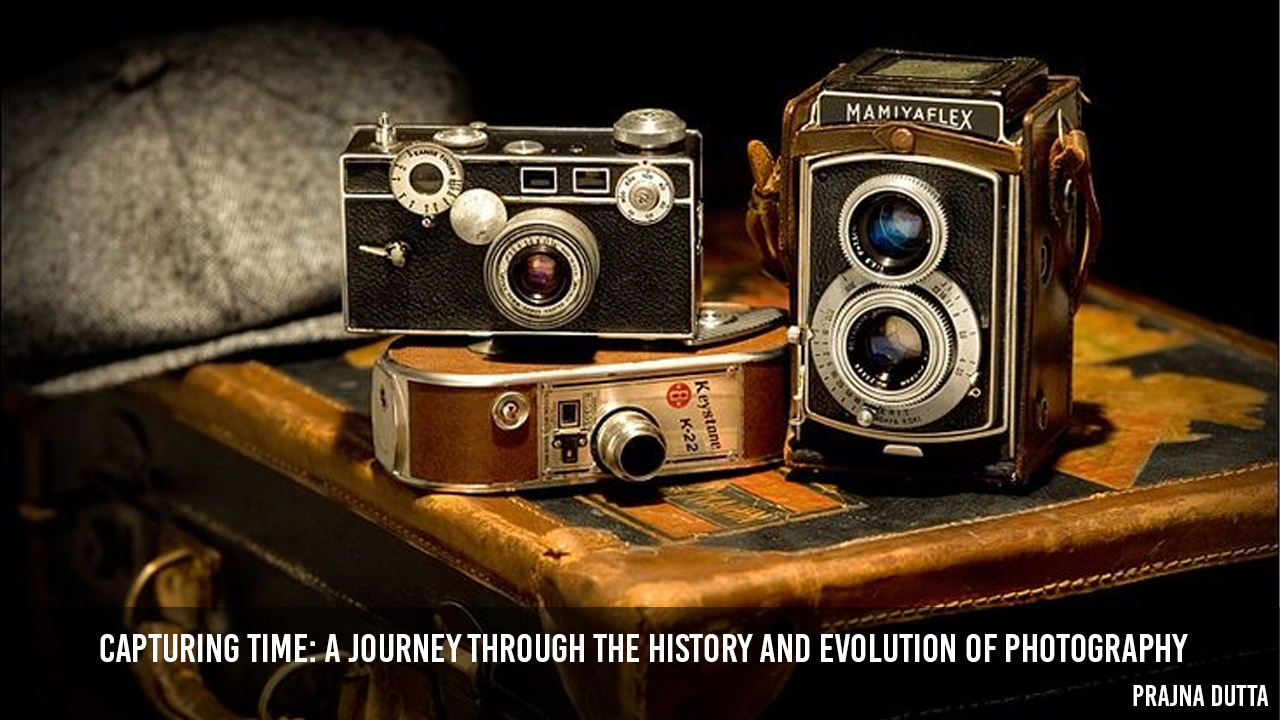Introduction:
Photography has become an indispensable part of our lives, allowing us to capture and preserve moments in time. But have you ever wondered about the origins and evolution of this remarkable art form? From the earliest attempts to capture images to the modern digital era, photography has undergone a fascinating journey of technological advancements and artistic exploration. In this article, we will delve into the rich history of photography, exploring key milestones and highlighting notable examples that have shaped the way we perceive and document the world around us.
1. The Precursors of Photography:
The desire to capture and reproduce images dates back centuries, even before the advent of photography. Ancient civilizations utilized various techniques such as camera obscura, pinhole cameras, and camera lucida to project and trace images. Notable examples include the camera obscura used by Leonardo da Vinci in the 15th century and the portable camera lucida developed by William Hyde Wollaston in the early 19th century.
2. The Birth of Photography:
The breakthrough in the development of photography came in the early 19th century, with the invention of the camera and the ability to capture permanent images. Joseph Nicéphore Niépce is credited with producing the world's oldest surviving photograph, 'View from the Window at Le Gras' (1826). However, it was Louis Daguerre who introduced the first practical photographic process, known as the daguerreotype, in 1839. This groundbreaking technique involved exposing a silver-coated copper plate to light, resulting in remarkably detailed images. One of the iconic examples of the daguerreotype is Daguerre's 'Boulevard du Temple' (1838), which is also recognized as the first photograph to capture a human.
3. The Evolution of Photographic Processes:
The following decades witnessed a rapid evolution of photographic processes. The wet plate collodion process, introduced by Frederick Scott Archer in 1851, replaced the cumbersome daguerreotype and allowed for faster exposure times. This advancement paved the way for more practical applications of photography, including portraiture and documentary photography. Notable examples from this era include Mathew Brady's Civil War photographs, which brought the harsh realities of war to the public's attention.
4. The Transition to Film:
The late 19th century marked a significant development in photography with the introduction of flexible film. In 1888, George Eastman revolutionized the field by introducing the Kodak camera, which used roll film, making photography accessible to the masses. This was followed by the development of various film formats, such as 35mm, which became the standard for both still and motion pictures. An iconic example is the 'Migrant Mother' photograph (1936) by Dorothea Lange, which captured the struggles of the Great Depression and became an enduring symbol of the era.
5. The Digital Revolution:
The advent of digital technology in the late 20th century brought photography to new heights. Digital cameras replaced traditional film, enabling instant image capture, storage, and manipulation. The rise of smartphones with high-quality built-in cameras further democratized photography, making it accessible to a broader audience. The digital era also witnessed the emergence of digital manipulation and post-processing techniques, allowing photographers to unleash their creativity in unprecedented ways. Examples include Steve McCurry's famed 'Afghan Girl' photograph (1984), which became an iconic symbol of global refugee crisis and the power of visual storytelling.
6. Advancements in Camera Technology:
As technology advanced, cameras became more sophisticated and compact. Digital single-lens reflex (DSLR) cameras offered professional-level image quality and control, while mirrorless cameras revolutionized the industry with their compact size, interchangeable lenses, and electronic viewfinders. Additionally, advancements in sensor technology improved low-light performance and dynamic range, pushing the boundaries of what was possible to capture.
7. Rise of Social Media and Mobile Photography:
The rise of social media platforms like Instagram and the widespread use of smartphones have led to an explosion of mobile photography. With high-resolution cameras and an array of editing tools at their fingertips, individuals can now document and share their lives in real-time. This has sparked a new era of visual communication, where photography has become a universal language.
8. Contemporary Photography and Artistic Expression:
Photography has evolved beyond mere documentation, becoming a medium for artistic expression and storytelling. Photographers now experiment with various genres, including landscape, portrait, street, conceptual, and abstract photography. They push boundaries, challenge norms, and use photography as a means to provoke emotions, convey messages, and initiate social change.
Conclusion:
The history and evolution of photography have been a remarkable journey of technological advancements, artistic exploration, and cultural transformation. From the early attempts to capture images to the digital revolution and the rise of mobile photography, photography continues to evolve, shape our perceptions, and document our world. As technology progresses and new trends emerge, it will be fascinating to witness the future developments and the ways in which photography will continue to captivate and inspire us.
Remember, each photograph tells a story, freezes a moment, and carries the power to ignite emotions, preserve memories, and shed light on the world around us. So, grab your camera, embrace the art of photography, and capture the beauty and essence of life through your lens.

Comments